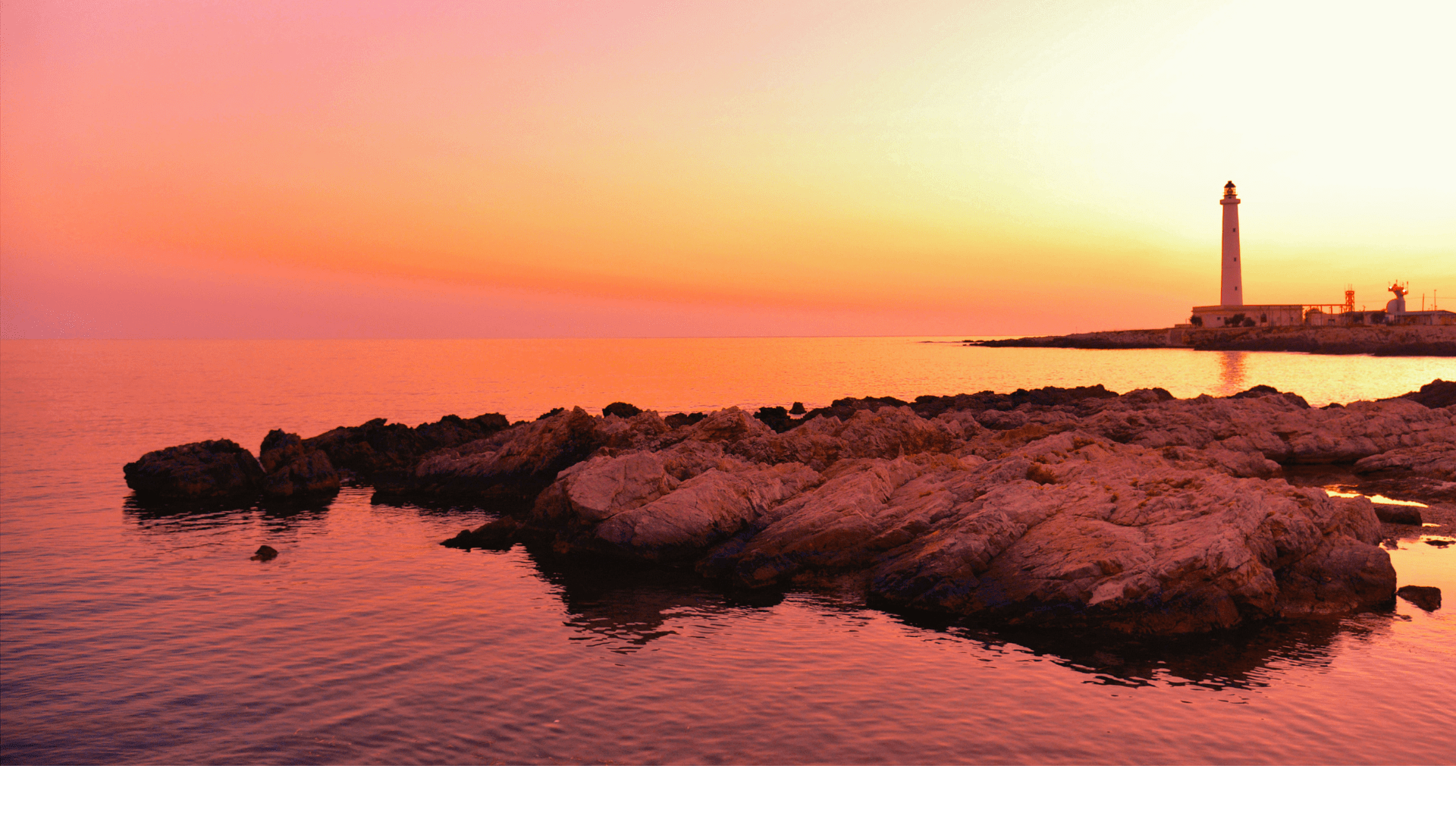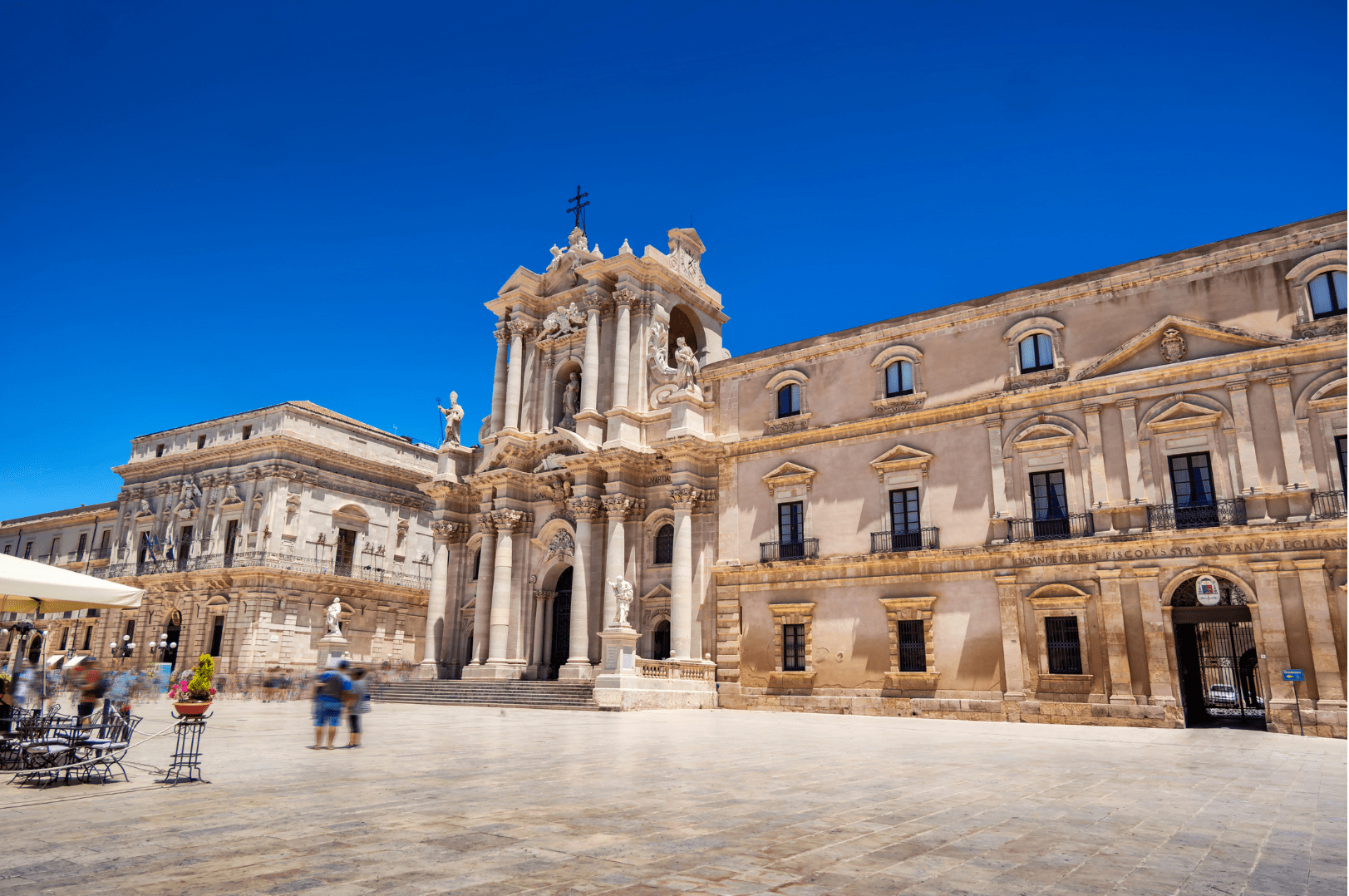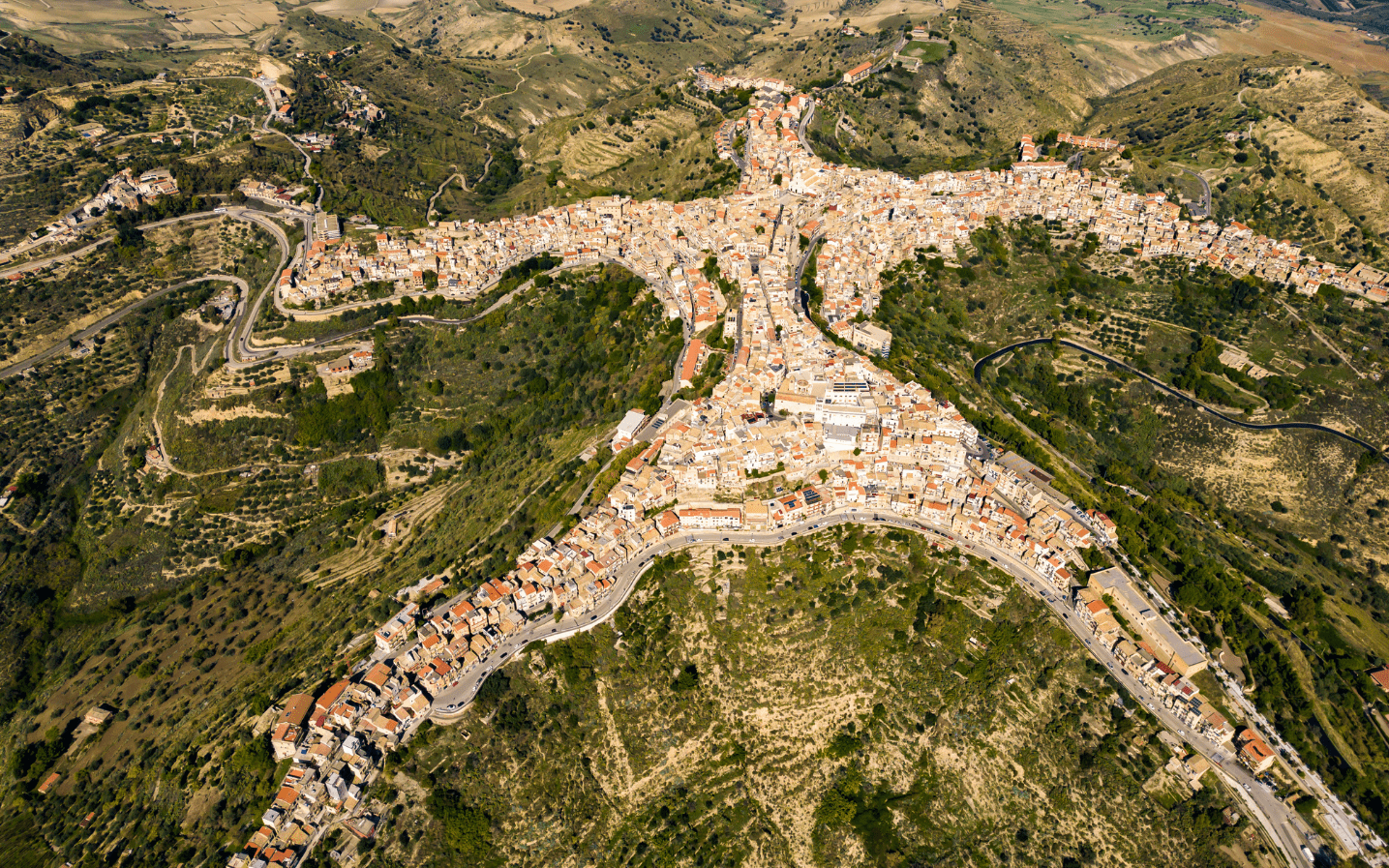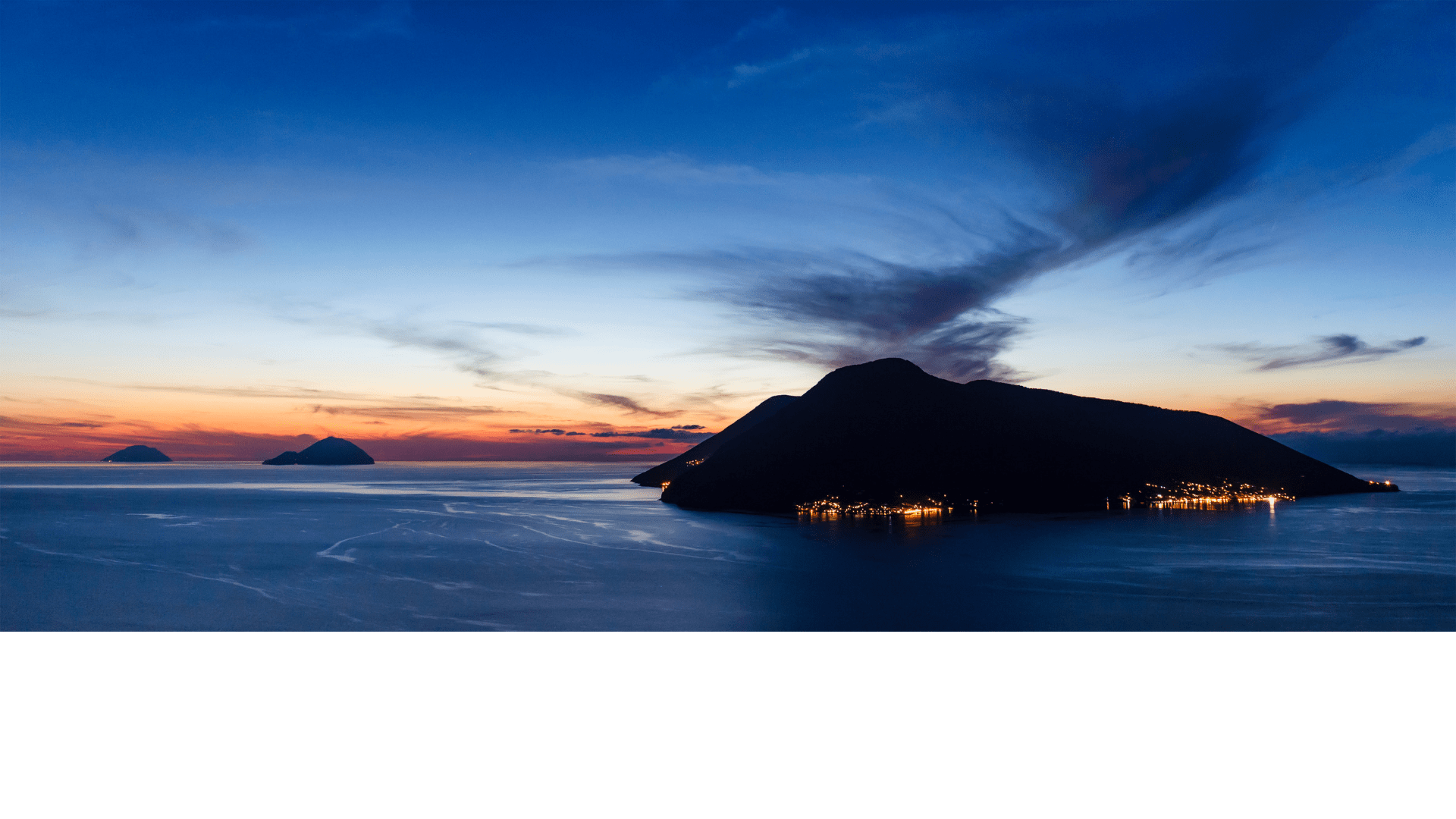DAY 1 ARRIVAL IN SICILY – MARSALA –
STAGNONE RESERVE – MOZIA
Marsala is a city and also a wine. Both are elegant and rich in history. The city is enclosed among the bastions of the sixteenth century, when it
lived a Renaissance that enriched it with palaces, churches and monasteries.
Wine is the product that has made it famous in the world, also thanks to the intuition of an English merchant who adapted it to the tastes of
overseas.
In the beautiful old town you can visit the remains of its past together with the historic cellars that hold high the prestige of its best product,
while the coast produces salt in spectacular salt pans.
Those who enter from Porta Nuova are welcomed by a series of beautiful Renaissance and Baroque buildings, such as the monastery of San Pietro
which houses the Civic Museum, with an archaeological section and one dedicated to the Risorgimento; Garibaldi and the Thousand landed
in Marsala to complete the task of the Unification of Italy.
On the north coast of the city, overlooking the Stagnone, there are the Saline of the Lagoon of Marsala Ettore and Infersa, one of the most
spectacular places on the west coast of Sicily, lakes that take on various colors depending on the season, on which stand the profiles of windmills
surrounded by mountains of white salt. A place not only very poetic and photogenic, but also of great historical interest with the opportunity to
visit the island of Mozia and environmental, structured to make those who visit the experience of salt in the round
DAY 2 FAVIGNANA AND LEVANZO ISLANDS
Facing the west coast of Trapani, lapped by a sea not very deep but unique for its varied colors we find “The Egadi Islands” one of the last
Marine Reserves. The main one is the island of Favignana, (current name from the prevailing wind the Favonio). It’s compared to a big “Butterfly on
the Sea” for its similar shape. In its sea, history reminds us that in 241 a.c. was fought the “battle of the Egadi” a bloody naval battle between the
Romans and Carthaginians, which ended the “Punic War” with the victory of the Romans, led by the praetor Publius Valerius Flaccus. Homer in his
Odyssey called it “The island of goats”. Favignana has always been “the Island of the Sun and the Winds”.
Since ancient times it has been and is the “Queen of traps”. In the fifteenth century. was transformed into “barony of traps” and assigned to
Giovanni de Karissima. The archipelago was bought in the seventeenth century. Pallavicini Rusconi of Genoa is sold in 1874, for two million lire,
to the powerful family of Palermo Florio. The island of Levanzo is crossed by a single road that runs from south to
north and that cuts through the village of white houses, climbing on the cliff, which are reflected on the blue water of the marina of “Cala
Dogana”. The island consists of white limestone rocks that have numerous caves. On the coast there are some caves, the most famous of
which is the Grotta del Genovese (discovered only in 1949), with its engravings and cave paintings of 11000 years ago. It is one of the oldest
evidence of human presence in Sicily
DAY 3 MARETTIMO ISLAND
The island of Marettimo, formerly called Hiera (sacred) is certainly the most pristine of the archipelago, characterized by a large amount of
natural caves of incomparable beauty.. The island is also the most mountainous, with Mount Falcone reaching almost 700 meters high.
Because of the very long insularity and the delay of at least 6000 years in the appearance of the first human settlements compared to the other
Egadi, Marettimo presents a different evolution of flora and fauna, which has allowed the prolongation in time of non-existent animal and
vegetable life in the rest of the Archipelago and in Sicily.
At the foot of the mountain rises the small town, from the white cubic houses to terrace. Behind the Scalo Nuovo (current docking point) is the
Scalo Vecchio, used by fishermen. From here you can see Punta Troia crowned by the ruins of a Spanish castle (XVII century), used as a prison
until 1844. A series of inaccessible paths (but also passable by donkey) lead to the heights within the island, favoring contact with unspoilt nature
and offering beautiful views.
The best way to visit Marettimo is the boat, which allows you to discover the many caves that characterize the coast and that open on steep
walls, among which the Camel Cave, the Tuono Cave, the Perciata Cave, the Crib Cave
DAY 4 ERICE – BORGO PARRINI
Beautiful and lonely, Erice is just 13 km from Trapani, on top of Mount Erice.
It dominates the whole valley of Trapani offering unique views and unforgettable sunsets. It has a very ancient and troubled history. In the
domination of this land there have been: Carthaginians, Romans, Normans, Arabs and walking through its streets it will be impossible not to notice.
Inside you can find different architectural styles. Although purely medieval, the true soul of Erice is classic and mythical!
We advise you to walk slowly through its streets, carefully observing its many towers, the cyclopean walls, the gates, the elegant courtyards and
over 60 churches. Here you will find a list of what you should definitely not miss during your stay in Erice!
Houses painted with the colors of the sea and the sun. And then mosaics, majolica, murals and phrases on the walls: it is a joy for the eyes Borgo
Parrini, a small hamlet of Partinico, about thirty kilometers from Palermo, now known for its architecture imaginatively inspired by Gaudi.
And for its rebirth, through culture and beauty. An ancient church and a handful of white, blue, yellow houses. Flowering plants and cobbled alleys,
a tiny district that turns on foot in just over an hour, pausing to admire and photograph the murals, fragments of majolica and colored glass that
adorn the houses. And the quotes of poets, artists and writers on the walls: words of peace, love, hope






